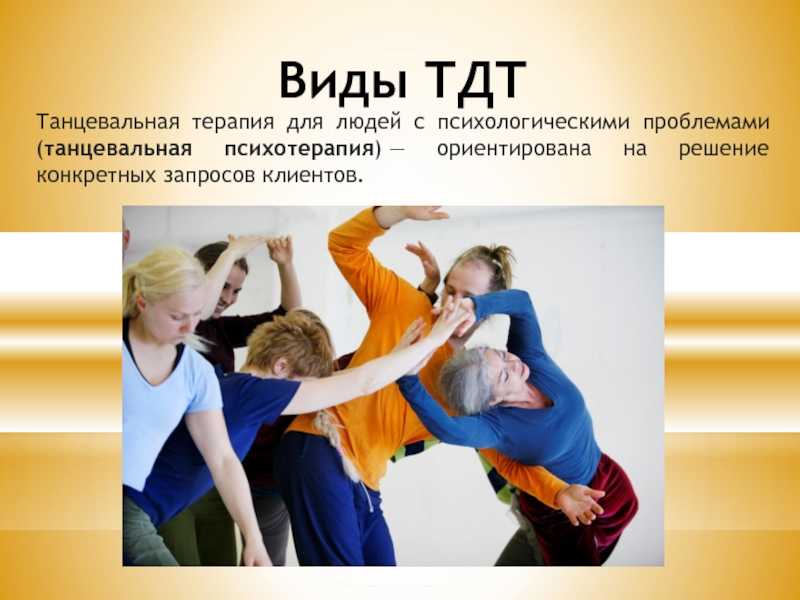How old was salome when she danced for herod
Salome: Was the "dancing" daughter of Herodias a child?
Children playing ball games.
2nd century AD marble relief, probably Roman.
(Source: Wikimedia)
Most people think of Salome as a conniving, dangerous seductress, but is her reputation as a seductress deserved? In this post, I look at the daughter of Herodias who “danced” for Herod Antipas in order to discover what kind of person she was and to find out what she did that resulted in John the Baptizer being beheaded.
[An article on Salome who was a follower of Jesus is here.]
Preamble: Young Woman or Little Girl?
I was reading 1 Samuel chapter 9 today, in the Greek, and I came across a word that is translated in 1 Samuel 9:11 (NIV) as “young women.” The word is korasia (plural).[1] When I think of “young women” I think of women around the ages of 18–25, but the “young women” in 1 Samuel 9 were probably girls whose chore it was to get water for the household.
I decided to look into this word korasion (singular), at its meaning and its usage, and while studying I found that there are two korasia mentioned in the New Testament.
Jairus’ daughter is identified as a korasion in Matthew 9:24 & 25 and Mark 5:41 & 42.[2] And we are given her age. She was twelve years old (Mark 5:42; Luke 8:42). The other korasion in the New Testament is the daughter of Herodias. (See Matt. 14:1–12; Mark 6:21–29).[3] Josephus tells us that the daughter’s name was Salome.[4]
In the past, I was led to believe that Salome was a sexy woman, an experienced temptress, and that she danced in a deliberately provocative manner for her stepfather Herod Antipas, but in real life Salome was possibly just a kid.[5]
This photo is of actress Brigid Bazlen portraying the clichéd Salome performing the “dance of the seven veils” in the movie King of Kings (1961). (Wikimedia)
Salome’s Seductive Dance or Endearing Play?
So what exactly did young Salome do to entertain her audience? Admittedly the rich sometimes indulged in salacious entertainment that sometimes involved children, but it is possible Salome’s dance was amusing and endearing rather than erotic.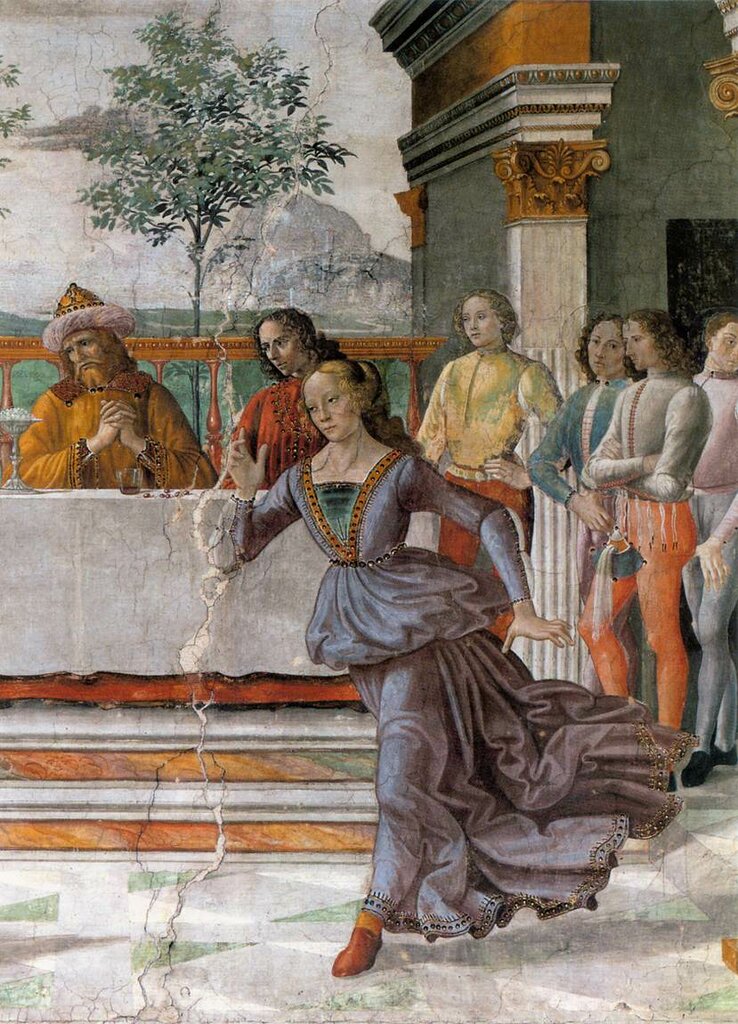
The Greek verb for “pleased” (areskō) in the phrase, “she pleased Herod …” (Matt. 14:6; Mark 6:22) doesn’t have sexual connotations in and of itself.[6] And the Greek word for “dance” (orcheomai) in these same verses can refer to children at play. So Salome may have been playing in an amusing way to entertain her audience, and was not just dancing.[7]
The only other occurrences of orcheomai in the New Testament are in a quotation from Jesus where he mentions children calling out about dancing and mourning (Matt. 11:16–17; Luke 7:32). Ominously, Jesus’s words in these two passages about John the Baptist who would be killed because of a child’s “dance.”
An Oath and an Opportunity
Some believe Herodias put her daughter up to dancing provocatively for Herod with the hope he would, in appreciation, make some sort of offer or promise. However, the text does not support this assumption. How could Herodias have predicted Herod would make such a promise?
Herod’s oath to give up to half his kingdom is an idiom.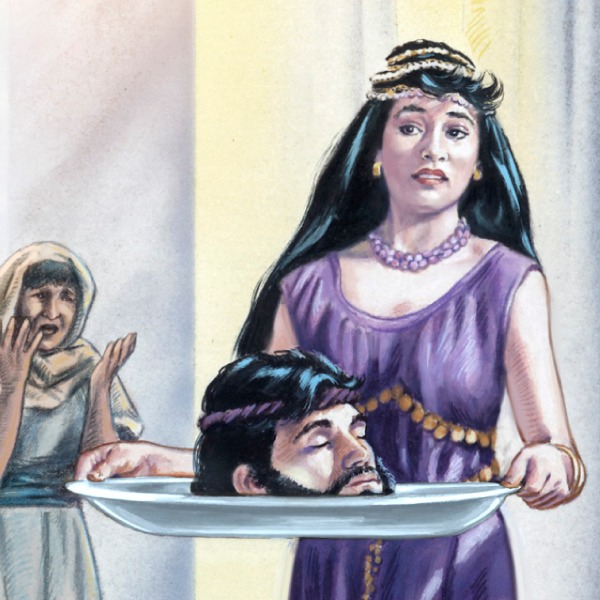 This idiom suggests that a person making a request can ask freely and expect a liberal gift (Mark 6:22–23; Matt. 14:6–7). The same idiom is used when Esther asks favours of King Xerxes (Esth. 5:3, 5, 7:2). Sometimes rulers such as Xerxes set no limits when offering gifts (Herodotus, Histories 9.109, cf. 111). It is unlikely anyone would have dared to ask Herod or Xerxes (or any other ancient ruler) for a considerable portion of their territory, let alone, almost half. Furthermore, Herod Antipas only became ruler (tetrarch) of Galilee and Perea with Caesar’s permission, and he probably didn’t have the authority to divide his realm.
This idiom suggests that a person making a request can ask freely and expect a liberal gift (Mark 6:22–23; Matt. 14:6–7). The same idiom is used when Esther asks favours of King Xerxes (Esth. 5:3, 5, 7:2). Sometimes rulers such as Xerxes set no limits when offering gifts (Herodotus, Histories 9.109, cf. 111). It is unlikely anyone would have dared to ask Herod or Xerxes (or any other ancient ruler) for a considerable portion of their territory, let alone, almost half. Furthermore, Herod Antipas only became ruler (tetrarch) of Galilee and Perea with Caesar’s permission, and he probably didn’t have the authority to divide his realm.
I suspect that when Herod made his oath to Salome, Herodias simply saw her opportunity to exact revenge on John the Baptist, and she took the opportunity when it presented itself. Moreover, rather than being a willing temptress, young Salome may have been an innocent pawn in her mother’s revenge against John the Baptizer who had been publicly condemning the marriage between Herodias and Herod Antipas (Matt. 14:3–4; Mark 6:17–21).
14:3–4; Mark 6:17–21).
Salome and Delilah: Misconceptions and Stereotypes
The unfounded sexualisation of Salome in art and literature reminds me of the treatment of Delilah. Delilah, like Salome, is typically portrayed in art and literature as a manipulative, sexual temptress, but in the actual text of Judges chapter 16, she sounds like a nagging wife (e.g., Judg. 16:16).
There is no evidence Delilah flirted or used her sexuality to coerce Samson into revealing his weakness. The narrative has her plainly asking, “Tell me the secret of your great strength and how you can be tied up and subdued” (Judg 16:6 cf. 16:10, 13, 15). There is no sneaky or sexy subtlety here. Of course, Delilah probably didn’t tell Samson that she had been richly bribed by the Philistines to discover the secret of his strength (Judg 16:5), but he should have figured this out pretty quickly.[8]
It saddens me that I have been misled into thinking that Salome and Delilah were seductive temptresses even though the Bible never states this.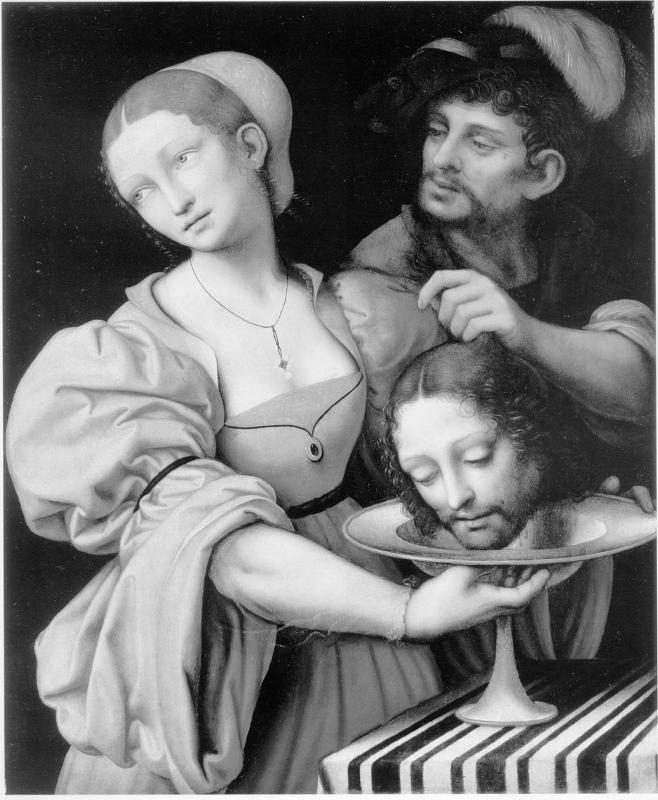 It saddens me that people, including Christians, have been too presumptuous and have cast these two women, and others, in this negative and nasty stereotype.[9]
It saddens me that people, including Christians, have been too presumptuous and have cast these two women, and others, in this negative and nasty stereotype.[9]
Conclusion
Real women and real men should not be type-cast; they should be seen for who they really are. This is true for Bible characters and it is true for people today.
Salome may have been a girl of around twelve years of age, who played or danced in front of an appreciative stepfather and his dinner guests, and who was prompted by her mother Herodias to ask for John the Baptist’s head on a silver platter. Who was Herodias? That’s an interesting story for another time.
Footnotes
I’ve used BDAG as the main source for definitions of Greek words in this post. Walter Bauer’s A Greek-English Lexicon of the New Testament and Other Early Christian Literature, 3rd Edition, revised and edited by F.W Danker (University of Chicago Press, 2000), is known as BDAG for short.
[1] Korasion (the singular form) is the diminutive form of the word korē.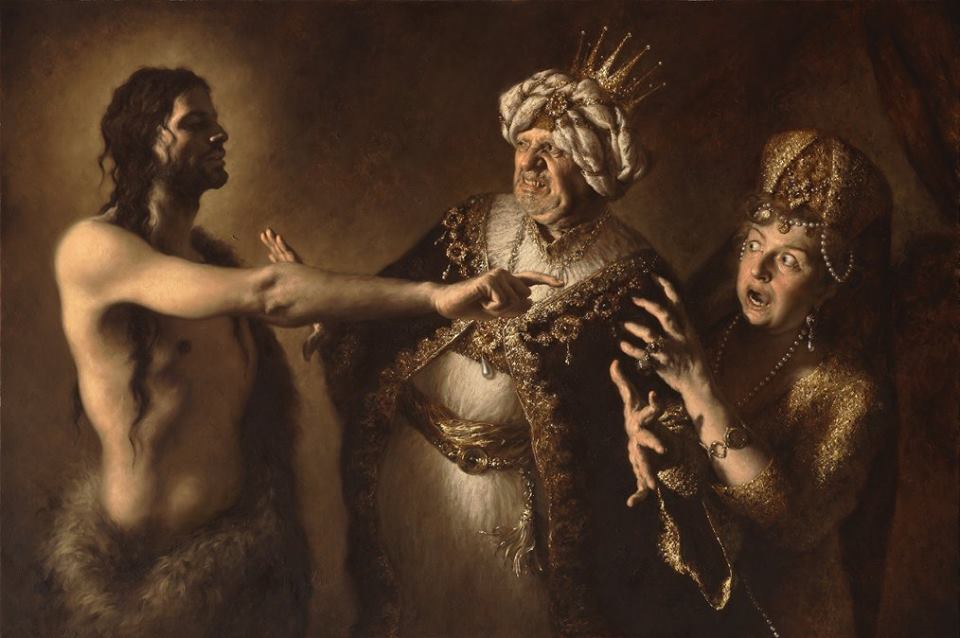 Korē means “girl” or “young woman.” As well as meaning “girl,” korē also means the pupil of the eye. Metaphorically korē refers to someone held dear and cherished: the darling, the favourite, the “apple” of one’s eye. (BDAG p. 560)
Korē means “girl” or “young woman.” As well as meaning “girl,” korē also means the pupil of the eye. Metaphorically korē refers to someone held dear and cherished: the darling, the favourite, the “apple” of one’s eye. (BDAG p. 560)
[2] In Luke’s account, Jesus calls the girl a pais (Luke 8:54). BDAG (p. 750) gives the definition of pais as a young person normally below the age of puberty with the focus on age rather than social status.
[3] The word korasion is used eight times in the New Testament, only of Salome and Jairus’ daughter (Matt. 14:11; Mark 6:22 & 28 twice, and Matt. 9:24, 25; Mark 5:41, 42). It occurs several more times in the Septuagint, the Greek version of the Old Testament. Boaz’s young unmarried maidservants, who Ruth gleans with, are called korasia (Ruth 2:8, 25; 3:2). In the book of Esther, the king’s men gather korasia to take to Xerxes harem (Est. 2:3, 4). Esther is herself referred to as a korasion in Esther 2:7 and again in 2:9 where she is also given seven korasia as maidservants.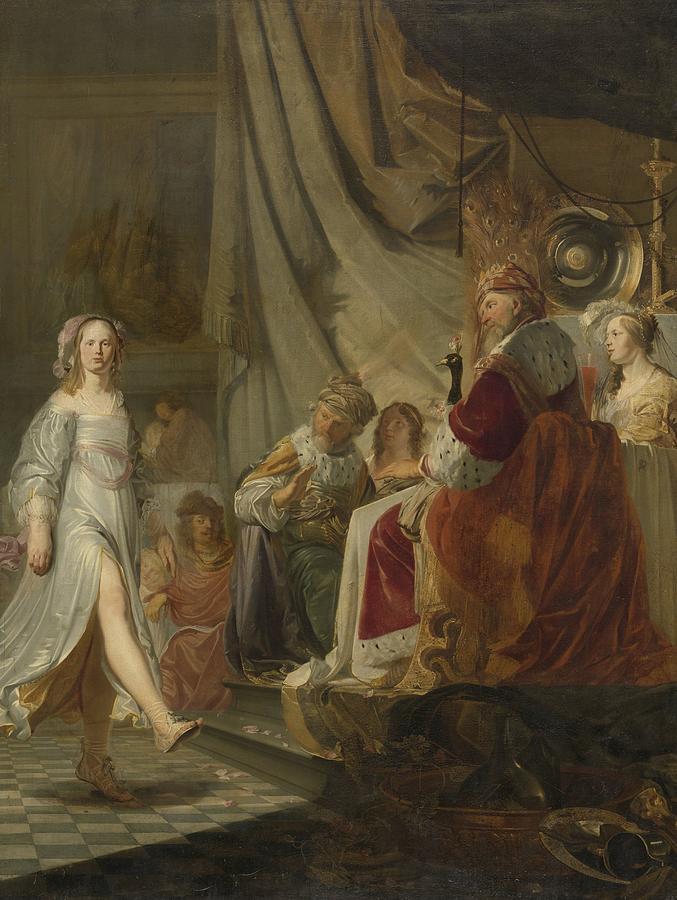 The word also occurs in 1 Samuel 20:30 and Zechariah 8:5 (9:5 LXX) in the Septuagint.
The word also occurs in 1 Samuel 20:30 and Zechariah 8:5 (9:5 LXX) in the Septuagint.
[4] “Salome” is derived from the Hebrew word shalom (“well-being, peace”) and was a popular girl’s name among ancient Jews. This is the passage where Josephus provides the name of Herodias’s daughter.
But Herodias, their sister, was married to Herod [Herod Philip I], the son of Herod the Great, who was born of Mariamne, the daughter of Simon the high priest, who had a daughter, Salome; after whose birth Herodias took upon her to confound the laws of our country, and divorced herself from her husband while he was alive, and was married to Herod [Antipas], her husband’s brother by the father’s side, he was tetrarch of Galilee; but her daughter Salome was married [in around AD 30] to Philip [Herod Philip II], the son of Herod [the Great], and tetrarch of Trachonitis; and as he died [in AD 34] childless, Aristobulus the son of Herod [of Chalcis], the brother of Agrippa, married her; they had three sons, Herod, Agrippa, and Aristobulus … Josephus, Jewish Antiquities (Book XVIII, Chapter 5, 4) (Underline added.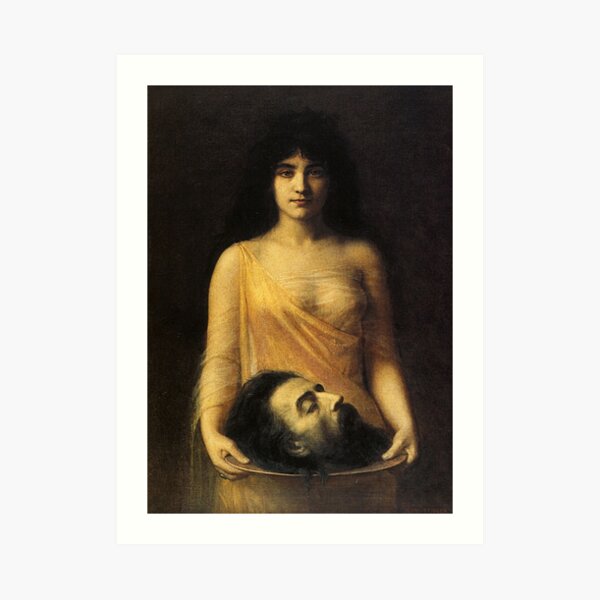 )
)
Salome became queen of Chalcis and Armenia Minor. This coin shows an image of Salome as queen. (Wikimedia) Another coin depicting Salome, and her husband Aristobulus on the other side, can be viewed here.
[5] Because of her first marriage in around AD 30 and her second marriage in around AD 35, Salome’s year of birth has been estimated at AD 14. It is thought that many Jewish women in the first century married around the ages of 14–16 years old. There is hard evidence, mainly from inscriptions, about the ages of Roman women, and Salome’s family were heavily influenced by Roman customs.
Frier and McGinn write, “The sources on age at marriage among ordinary Romans, although poor in quality, suggest that women ordinarily entered their first marriage in their middle to late teens, but men only in their mid- to late twenties …” The authors further note, however, that girls in the upper classes (girls such as Salome) could be used as political pawns and be “given in marriage at an extremely tender age.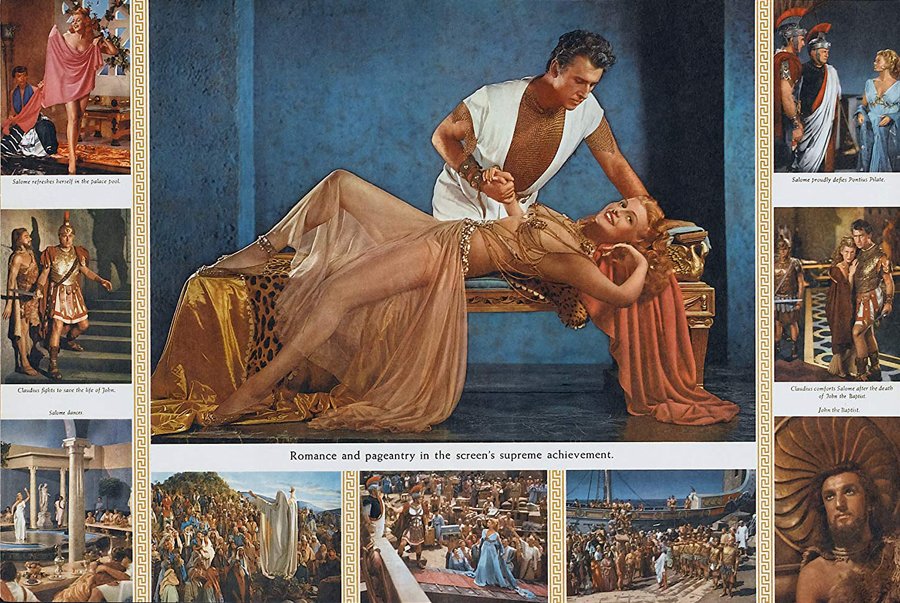 ” Bruce W. Frier and Thomas A. McGinn, A Casebook on Roman Family Law (New York: Oxford University Press, 2004), 28.
” Bruce W. Frier and Thomas A. McGinn, A Casebook on Roman Family Law (New York: Oxford University Press, 2004), 28.
[6] A common context of verses in the New Testament that contain the verb areskō is the context of pleasing God (e.g., 1 Thess. 4:1). For comparison, all the verses in the New Testament that contain this verb can be viewed here.
[7] I read the book Early Christian Families in Context last October (2012) in which there was a disturbing chapter about delicia children who were kept by some rich Roman men and women for the purpose of amusement and entertainment. These children, who were usually procured when they were very young, were often treated as pampered pets. Their main “job” was to play for the amusement of their owner. (It is not clear how common it was for delicia children to be involved in erotic entertainment and games.) I’m not all suggesting that Salome was a delicia child. I only mention this to show that wealthy Romans viewed the play of children, including innocent play, as entertainment.
[8] Delilah asked Samson four times to reveal the secret of his strength. Three times Samson replied by lying to her, but the fourth time he told the truth. After the first three times, when the Philistines suddenly appeared on the scene after Delilah had bound him, one would expect Samson to be aware that Delilah was allied with the Philistines. George Athas suggests a reason Samson trusted Delilah here.
[9] As well as the possible misrepresentations of Salome and Delilah by both Bible commentators and artists, Eve is sometimes portrayed as a sexual temptress, Bathsheba is commonly thought to have been an adulteress (but was more likely a victim of rape), the Samaritan woman of Sychar is regarded as a loose woman, and poor Mary Magdalene has been unjustly identified for centuries as a sex worker.
© Margaret Mowckzo 2012
All Rights Reserved
You can support my work for as little as $3 USD a month.
Become a Patron!
Explore more
The Portrayal of Women in the Bible and Biblical Inspiration
Reading the Bible with a Masculinist Bias
Women, Eve, and Deception
The Samaritan Woman of Sychar (John 4)
Who was Mary the Magdalene?
Salome: Follower of Jesus and Myrrh Bearer
The Domestic Intrigues and Political Power of Salome I, Sister of Herod the Great
Salome Dance
Salome—John Benner, Nantes MuseumSalome was the daughter of Herodias and one of Herod the Great’s sons Philip.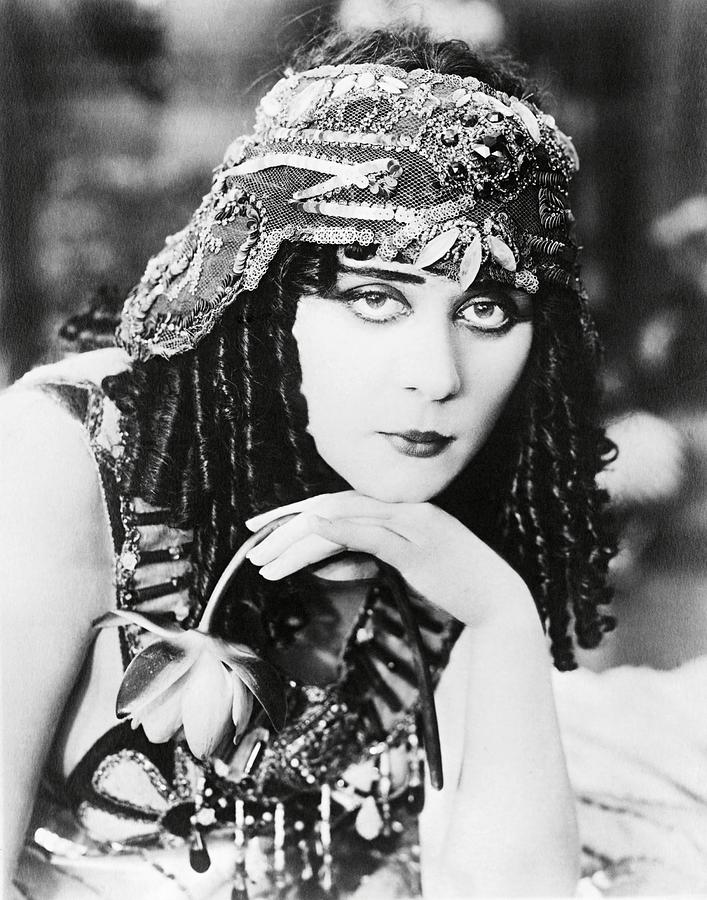 Her mother Herodias and another of Herod’s sons Antipas committed adultery and divorced their spouses and were married in c. 27 AD. Young Salome was dragged along to Israel in this Biblical unholy alliance: “If a man takes his brother’s wife, it is impurity. He has uncovered his brother’s nakedness.” Leviticus 20:21
Her mother Herodias and another of Herod’s sons Antipas committed adultery and divorced their spouses and were married in c. 27 AD. Young Salome was dragged along to Israel in this Biblical unholy alliance: “If a man takes his brother’s wife, it is impurity. He has uncovered his brother’s nakedness.” Leviticus 20:21
The Jews in the Galilee region, home to Jesus of Nazareth and ruled by Antipas, were outraged at this adultery and marriage. There was one particular man up in the Galilee area, a raging, ascetic, charismatic prophet from the desert of the Essenes named John, who publicly plagued Antipas and Herodias with their sin.
“…(Antipas gave) orders to have John arrested and he had him bound and put in prison (at Machaerus). He did this because of Herodias, his brother Philip’s wife, whom he had married. For John had been saying to Herod, ‘It is not lawful for you to have your brother’s wife.’ So Herodias nursed a grudge against John and wanted to kill him.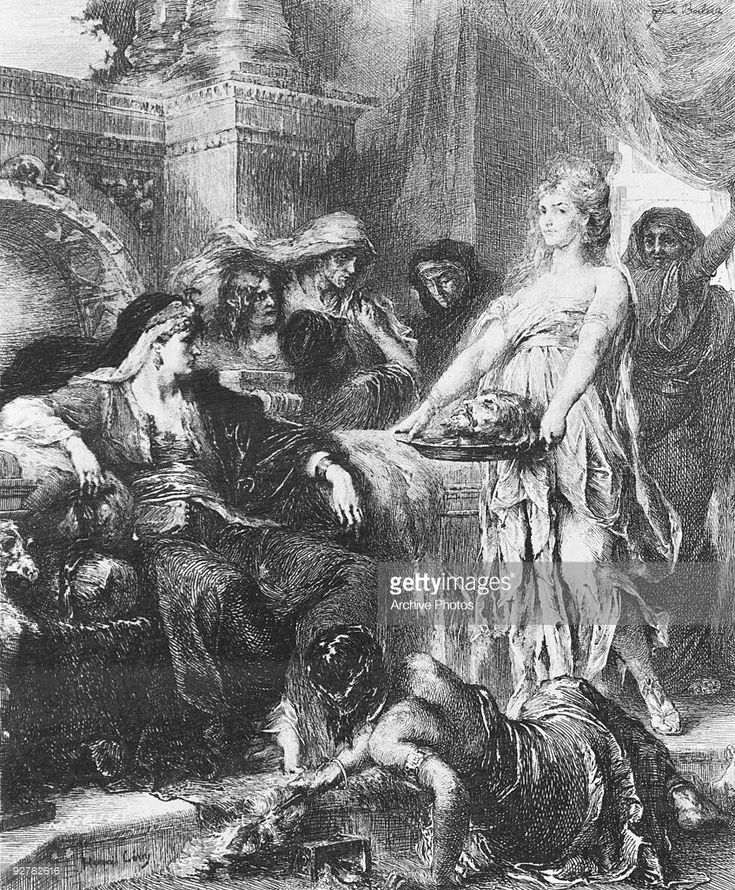 But she was not able to because Herod (Antipas) feared John and protected him, knowing him to be a righteous and holy man. When Herod heard John, he was greatly puzzled, yet he liked to listen to him.” Mark 6:17-20
But she was not able to because Herod (Antipas) feared John and protected him, knowing him to be a righteous and holy man. When Herod heard John, he was greatly puzzled, yet he liked to listen to him.” Mark 6:17-20
Since Antipas is not known as a ruthless killer like his father Herod the Great or his brother Archelaus, it is interesting and somewhat touching that Antipas was moved by John’s words of repentance and by himself would never have arrested a man whom he considered ”holy and righteous.” He protected the Baptist from his nagging, Hasmonean-proud Herodias by just jailing him.
But it was Herodias’ c. 13-14-year-old daughter Salome who finally silenced John.
It was Antipas’ 49th birthday. His small family and large retinue had gone to his beautiful fortress/palace at Machaerus, built on top of a high hill with a 360 degree view of the Dead Sea. It was and is (in Jordan) a sight to behold.
Aerial View of Antipas’ Palace in Machaerus“On his birthday Antipas gave a banquet for his high officials and military commanders and the leading men of Galilee. When the daughter of Herodias (Josephus identifies her as Salome) came in and danced, she pleased Herod and his dinner guests. The king said to the girl, ‘Ask me for anything you want and I’ll give it to you.’ And he promised her with an oath, ‘Whatever you ask, I will give you, up to half my kingdom.’ She went out and said to her mother, ‘What shall I ask for?’ ‘The head of John the Baptist,’ (Herodias) answered. At once (Salome) hurried into the king with the request, ‘I want you to give me right now the head of John the Baptist on a platter.’ (Antipas) was greatly distressed but because of his oaths and his dinner guests, he did not want to refuse her. So he immediately sent an executioner with orders to bring John’s head. He presented it to (Salome), and she gave it to her mother. On hearing of this, John’s disciples came and took his body and laid it in a tomb.” Mark 6:21-29
When the daughter of Herodias (Josephus identifies her as Salome) came in and danced, she pleased Herod and his dinner guests. The king said to the girl, ‘Ask me for anything you want and I’ll give it to you.’ And he promised her with an oath, ‘Whatever you ask, I will give you, up to half my kingdom.’ She went out and said to her mother, ‘What shall I ask for?’ ‘The head of John the Baptist,’ (Herodias) answered. At once (Salome) hurried into the king with the request, ‘I want you to give me right now the head of John the Baptist on a platter.’ (Antipas) was greatly distressed but because of his oaths and his dinner guests, he did not want to refuse her. So he immediately sent an executioner with orders to bring John’s head. He presented it to (Salome), and she gave it to her mother. On hearing of this, John’s disciples came and took his body and laid it in a tomb.” Mark 6:21-29
Young pubescent girls in ancient times were taught by their female relatives to dance with veils, with hand and hip movements, suggestive dances because they would perhaps attract eligible young men as husbands and/or to create flexibility in preparation for childbirth.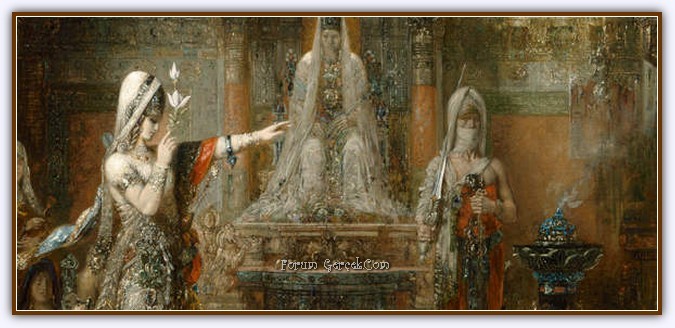 On the walls of tombs in ancient Egypt there are beautiful paintings of 12-13-year-old girls dancing completely nude except for a thin belt around their genital area.
On the walls of tombs in ancient Egypt there are beautiful paintings of 12-13-year-old girls dancing completely nude except for a thin belt around their genital area.
It is impossible to know exactly what kind of dance Salome did, but it was probably a suggestive dance similar to the belly dance. The “belly dance” goes back thousands of years. When it was first introduced to the American public at the Chicago World Fair in 1893, it was shocking to the late Victorian sensibilities. The exhibit was called “The Streets Of Cairo” and featured female dancers from the Middle East and north Africa—un-corseted and naked, almost. There were unsuccessful efforts to close down the exhibit.
Salome seems like an innocent child in the Biblical representation.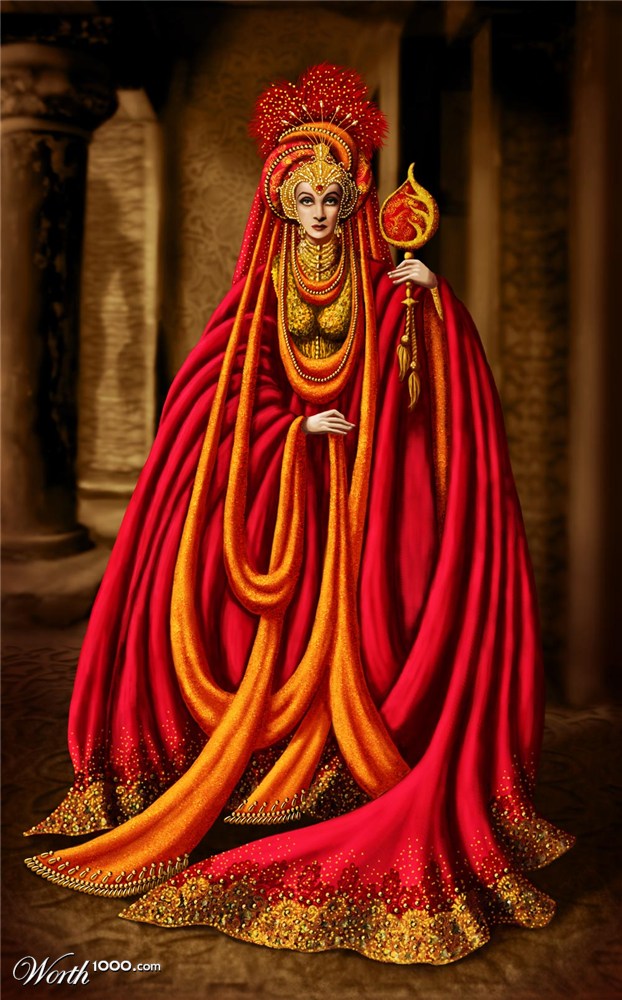 She knows her stepfather/great-uncle is pleased with her and wanted to give her a big present. She runs to her mother and asks what she should ask for. She hurries back to Antipas, surrounded by all his food and desserts displayed on large platters and blurts out, “Give me the head of John the Baptist right now on one of these big platters.”
She knows her stepfather/great-uncle is pleased with her and wanted to give her a big present. She runs to her mother and asks what she should ask for. She hurries back to Antipas, surrounded by all his food and desserts displayed on large platters and blurts out, “Give me the head of John the Baptist right now on one of these big platters.”
Antipas is reluctant to kill the holy man John. He had imprisoned him for a long time in order to keep him and his wife Herodias quiet. He had no choice in front of all his commanders and important men. He was forced to keep his word. He had John beheaded in the basement dungeon of Machaerus and served it up to Salome.
Presenting of John the Baptist’s head to King Herod—Frans Francken II (1581-1642)It is sure Antipas’s Birthday Party was a happy one for the conniving Herodias who had used her young daughter as a pawn to check-mate the Baptist.
Herodias with the Head of Saint John the Baptist— Francesco del Cairo (1598-1674)Coin of Aristobulus and his wife Salome, c.
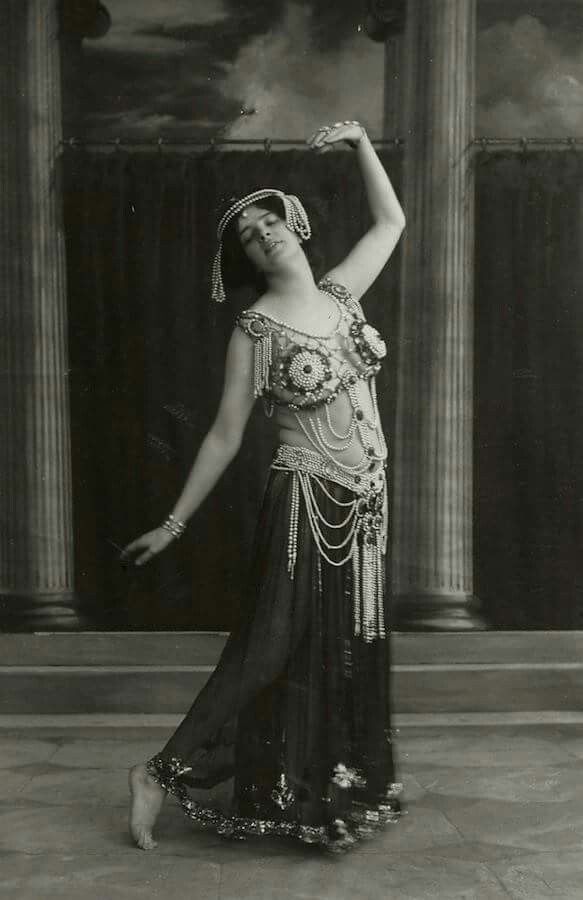 44 AD
44 ADShortly after the Baptist incident, the innocent pawn Salome was moved around the board to Syria where she was married off to her, (much older by 38 years) mother’s uncle, her great-uncle Philip the Tetrarch. When Philip died several years later in 34 AD, Salome was married off to Aristobulus of Chalcis, a great- grandson of Herod the Great. Since Salome was a great- granddaughter of Herod, the blood lines were not as thick as they were in the first and second generations from Herod. Salome and Aristobulus had three children and seemed to have lived happily ever after.
There is an account, Letter From Herod (Antipas) To Pilate, from the 6th/7th century AD: “…as my dear daughter (Salome), who is dear to me, was playing upon a pool of water which had ice upon it, it broke under her and all her body went down and her head was cut off and remained on the surface of the ice. And, behold, her mother is holding her head upon her knees in her lap and my whole house is in great sorrow. ” This patently false account of Salome’s death appears again in the 9th century from the Byzantine Patriarch Nicephorus. Both accounts were made up out of whole cloth, but the fairy tale does give a poetic resonance from Salome holding the Baptist’s head at the instigation of her mother to her mother holding Salome’s head.—Sandra Sweeny Silver
” This patently false account of Salome’s death appears again in the 9th century from the Byzantine Patriarch Nicephorus. Both accounts were made up out of whole cloth, but the fairy tale does give a poetic resonance from Salome holding the Baptist’s head at the instigation of her mother to her mother holding Salome’s head.—Sandra Sweeny Silver
CLICK FOR HOME PAGE
). A more detailed story about Salome is contained in the work of the historian Josephus Flavius "Antiquities of the Jews". G.Klimt. Salome (Judith II). Fragment, 1909 Salome's mother is Herodias, the youngest daughter of Berenice ( Veronica ) and Aristobulus, the executed son of Herod the Great. Left an orphan, Herodias married her own uncle, Herod Philip I. Herodias chose Cleopatra and the legendary Assyrian queen Semiramis as role models. Like Livia, the wife of Emperor Augustus, she sought out virgin mistresses for her aging husband in order to consolidate her influence.
Her daughter Salome was in Rome from childhood, studying dance and music. The ambitious Herodias craved power, so she soon abandoned Herod Philip for the sake of the Galilean tetrarch Herod Antipas ( Antispas or Sosipater ), the half-brother of her ex-husband. In biblical times, closely related ties were by no means exclusive. However, the people grumbled dully: " Herodias is not a widow, besides she has a child, that's the abomination! » Herodias was particularly annoyed by the Jewish preacher of the Essenes Jokanaan, nicknamed John the Baptist. One of the main themes of his criticism was the denunciation of the immorality of Herodias.
Masolino da Panicale. Rebuke of John the Baptist. 1435 According to the Bible: “ Herodias, angry at him, wanted to kill him, but could not. For Herod was afraid of Jokanaan, knowing that he was a righteous and holy man, and guarded him: he did many things, obeying him, and listened to him with pleasure ".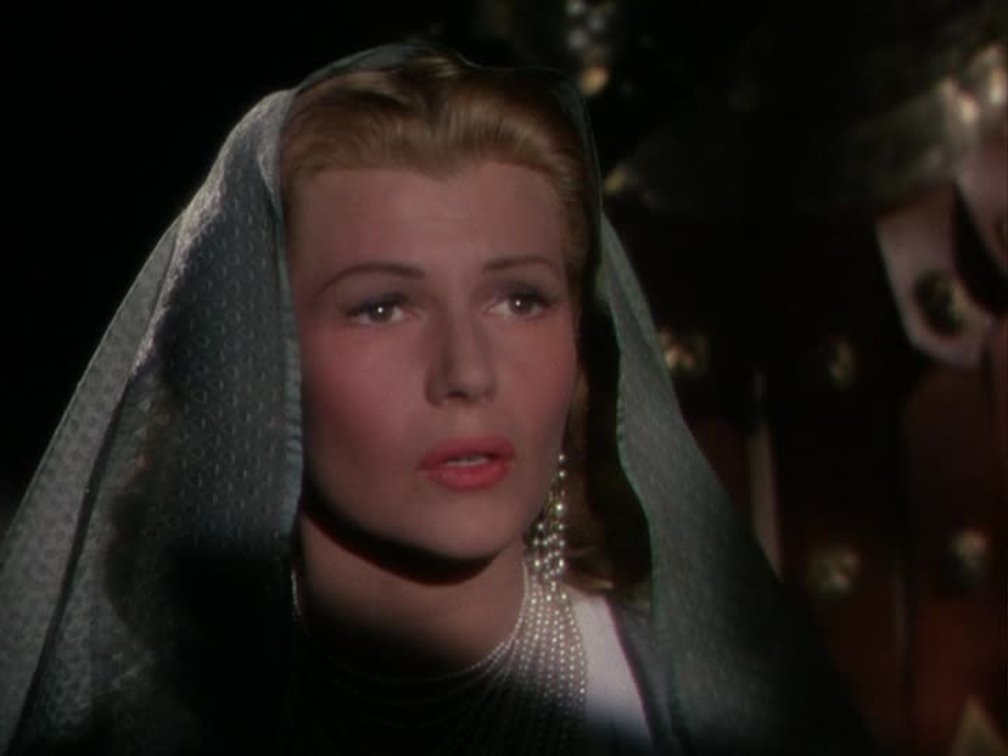 Nevertheless, the impudent heretic was imprisoned just in case. Soon Herodias had a very convenient opportunity to deal with John. In 39 (?), Herod Antipas celebrated his birthday in the fortress of Macheron on the border of Palestine and the possessions of the Arabian king Aretas. Numerous guests were invited to the celebration, “ nobles, commanders of thousands and elders of Galilee ”. Among them was Salome. She attracted everyone's attention with her appearance and bold manner.
Nevertheless, the impudent heretic was imprisoned just in case. Soon Herodias had a very convenient opportunity to deal with John. In 39 (?), Herod Antipas celebrated his birthday in the fortress of Macheron on the border of Palestine and the possessions of the Arabian king Aretas. Numerous guests were invited to the celebration, “ nobles, commanders of thousands and elders of Galilee ”. Among them was Salome. She attracted everyone's attention with her appearance and bold manner.
In the Gospels of Matthew, Mark and Luke, the canonical history of Salome is recounted in almost the same words: “ The daughter of Herodias entered, danced, and pleased Herod and those reclining with him. The king said to the girl: ask me for whatever you want, and I will give it to you. And he swore to her: whatever you ask of me, I will give you, even up to half of my kingdom ".
Benozzo Gozzoli. Dance of Salome. 1461-1462 Filippo Lippi. Feast of Herod. 1452-1464 Donatello. Feast of Herod. Bronze relief. OK. 1425
Feast of Herod. Bronze relief. OK. 1425 The Bible does not contain a description of the dance that Salome performed in front of her stepfather. In later writings it is called the dance of the seven veils (dance of the seven veils) . The ancient authors Cassius Dio, Pausanias, Demosthenes, and others mention the erotic Kordak dance that really existed in antiquity: rhythmic swaying of the hips, accompanied by throwing off clothes.
G. Bussier. Dance of the Seven Veils G. Moreau. Dance of Salome. 1874-1876 According to some historians, Salome could not have danced at the feast at all. At that time, she was barely five or six years old and she just played with herself, and Herod admired the naive charm of the child.
In any case, Salome was so young that she could not choose her reward without her mother's prompting: “She went out and asked her mother: what to ask? She answered: the heads of John the Baptist.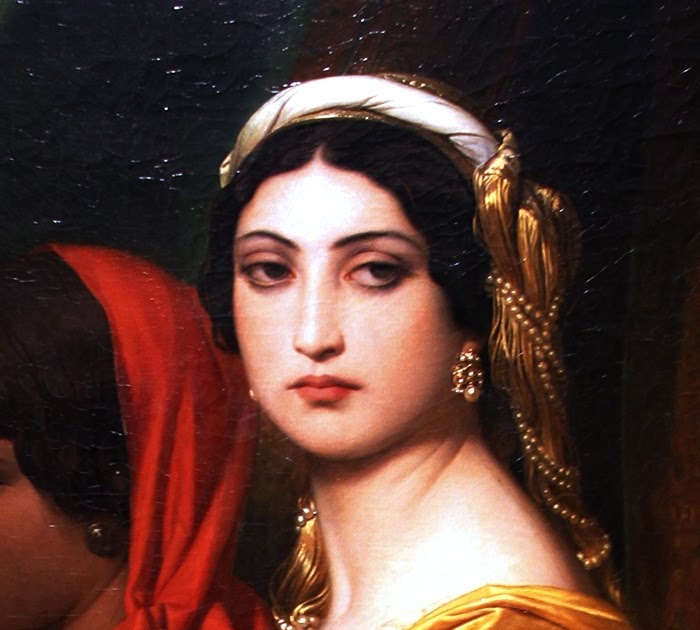 And she immediately went in haste to the king and asked, saying: I want you to give me now on a platter the head of John the Baptist ” (Gospel of Mark 6: 24-25).
And she immediately went in haste to the king and asked, saying: I want you to give me now on a platter the head of John the Baptist ” (Gospel of Mark 6: 24-25).
“The king was grieved, but for the sake of the oath and those reclining with him, he did not want to refuse her. And immediately, sending a squire, the king commanded that his head be brought. He went cut off his head in prison, and brought his head on a platter, and gave it to the maiden, and the maiden gave it to her mother.” (Gospel of Mark 6:26-28). According to legend, the severed head continued to denounce Herod and Herodias. Then Herodias pierced the tongue of the prophet with a pin and threw her head into a cesspool.
Caravaggio. The beheading of John the Baptist. 1608 V. Surikov. Salome brings the head of John the Baptist to her mother Herodias. 1872 P. de Grebber. Herodias over the severed head of John the Baptist, supported by Salome.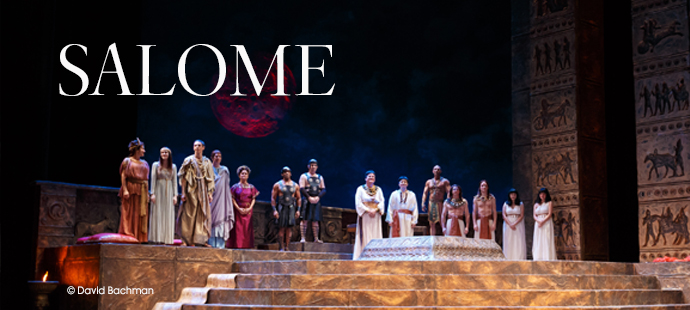 1640
1640 The senseless murder of John brought no benefit to Herodias. The people of Galilee were indignant and openly sympathized with the preacher. The unlucky couple of Jewish intriguers ended their days in exile, poverty and oblivion.
There is no reliable information about the further fate of Salome. According to some reports, she returned to Rome, where she continued a carefree social life. After some time, she married her uncle, Tetrarch Herod Philip II. This marriage was childless. Having been widowed, Salome remarried, this time to Aristobulus, son of Herod of Chalcis, her maternal cousin. The couple lived a long life and produced three sons: Herod, Agrippa and Aristobulus. This period of Salome's life is evidenced by the surviving coins with her image, dated 56-57. The face of the coins bears the profile of her husband and the inscription ΒΑΣΙΛΕΩΣ ΑΡΙΣΤΟΒΟΥΛΟΥ ( king Aristobulus ), on the back is Salome herself and the inscription ΒΑΣΙΛΙΣ ΣΑΛΟΜΗΣ ( queen Salome ).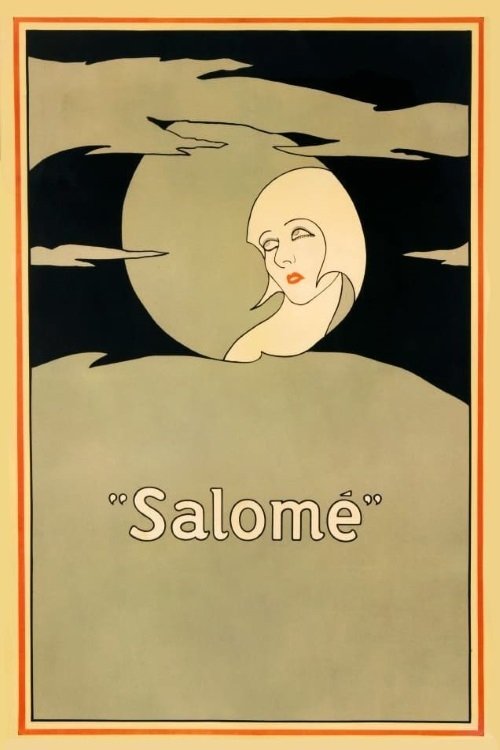
The exact date and circumstances of Salome's death are unknown.
The image of the legendary temptress and femme fatale of antiquity gave rise to a whole tradition in European artistic culture.
Salome and John the Baptist legend. Titian and his beloved. An excerpt characterizing Salome
The biblical legend says:
PROLOG.
Herod Antipas ruled in two provinces - Galilee and Perea. He was a vicious and envious person. Herod was in his 50s when he fell in love and decided to marry the wife of his brother Herodias, whom he disinherited. The ambitious Herodias was weary of her humiliating position and dreamed of power.
Herod Antipas
Titian, Salome with the head of St.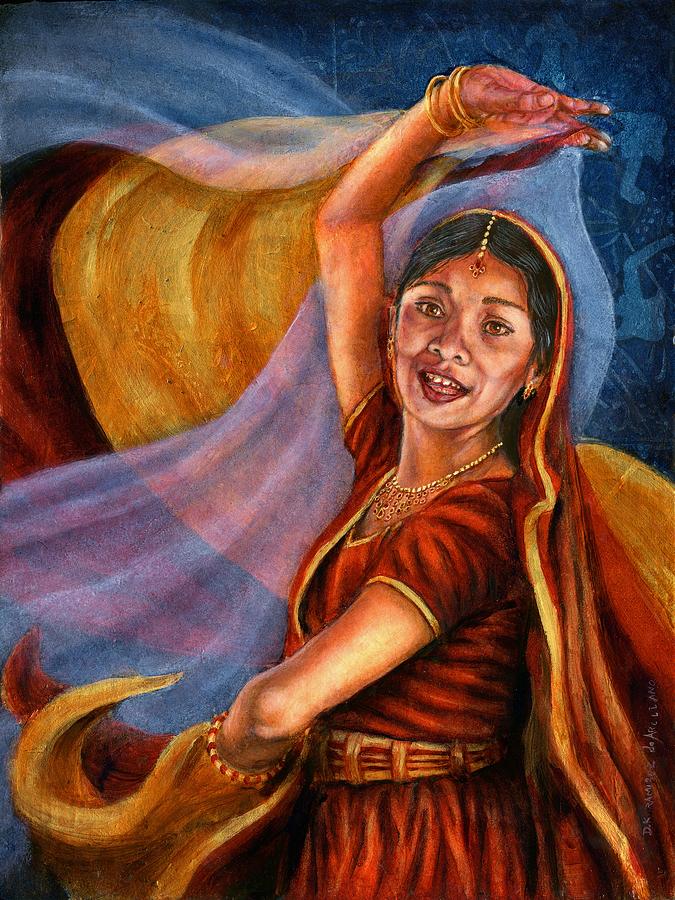 John the Baptist, c. 1530
John the Baptist, c. 1530
TIE.
John the Baptist openly opposed this marriage. The prophet of God openly rebuked Herod for cohabiting with Herodias, the wife of his brother Philip. After the Baptism of the Lord, Saint John the Baptist was imprisoned by Herod Antipas. He did not stop reproaching Herod even after he was imprisoned in the fortress. Therefore, the prisoner was dangerous for Herodias and she was looking for a reason to deal with him.
Giotto, Feast at King Herod, 1320 *** CULMINATION.
Herod made a feast on his birthday. There were many guests of honor from military leaders to the elders of Galilee. Herod asks the daughter of Herodias - Salome to dance the ritual dance of the seven veils, with which the woman tells the man that she is in his power, Salome agrees for the reward that she will announce later. She performed an incendiary Syrian dance in front of the guests and pleased the birthday man.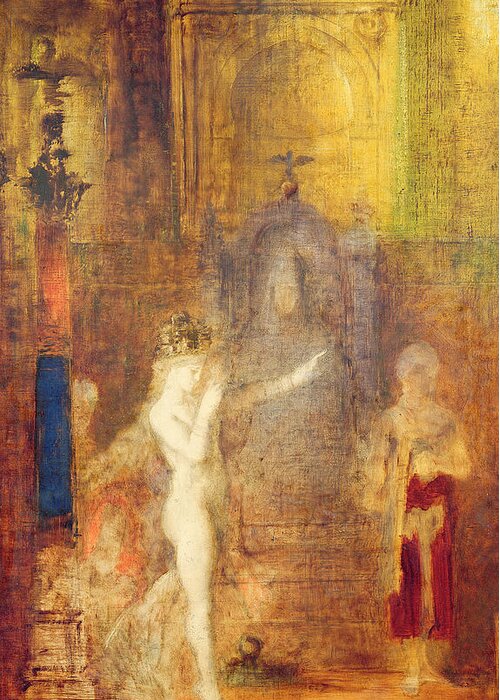 The guests, as if bewitched, looked after her - she was so beautiful, her movements were so light and graceful. They asked her to dance again and again.
The guests, as if bewitched, looked after her - she was so beautiful, her movements were so light and graceful. They asked her to dance again and again.
And when Salome finished, the drunken Antipas exclaimed: “Ask me for anything you want!! I swear - everything you want will be yours, at least half of the kingdom !!!
He called those present to witness that he would swear to fulfill any wish of the princess. Salome decided to consult with her mother. The mother, hating the prophet for his words that he dared to say about her, suggested: "The head ... Demand the head of John! And that they bring it immediately!"
Salome, returning to the hall, said: “I ask for the head ... .. the head of John the Baptist himself”
And the guests fell silent. More recently, they admired Salome's dance. And now they were dumb with horror. Many of them were dishonorable people. They have done many bad things in their life. Yes, and John himself, many disliked. But kill the prophet! None of them would have dared to do this. Antipas' face darkened. The Prophet always inspired him with respect. However, Herod, wanting to keep his word given in front of distinguished guests, ordered the young girl to fulfill the request. John the Baptist was immediately beheaded and brought to Salome. And then the servants appeared with a large shiny dish. Recently, on those dishes, the same servants brought refreshments to the guests. Now on one of them lay the severed head of John. Salome took the terrible gift to her mother.
But kill the prophet! None of them would have dared to do this. Antipas' face darkened. The Prophet always inspired him with respect. However, Herod, wanting to keep his word given in front of distinguished guests, ordered the young girl to fulfill the request. John the Baptist was immediately beheaded and brought to Salome. And then the servants appeared with a large shiny dish. Recently, on those dishes, the same servants brought refreshments to the guests. Now on one of them lay the severed head of John. Salome took the terrible gift to her mother.
Lucas Cranach the Elder, Herod's Feast, 1530 *** EPILOG.
God's wrath fell on those who dared to kill the prophet. In winter, on the Salome River, she fell through the ice. Her head, cut off by a sharp ice floe, was brought to Herod and Herodias, just as the head of St. John the Baptist, but her body was never found. The former father-in-law, the Arabian king Arefa, moved his troops against Herod and defeated him. The Roman emperor, in anger, exiled Herod along with Herodias to Spain, where they died.
The Roman emperor, in anger, exiled Herod along with Herodias to Spain, where they died.
Benozzo Gozzoli, Salome's Dance at King Herod's Feast and the Beheading of Saint John the Baptist, 1461-1462
"Salome" Gaston Bussiere (1862-1929) ***
Dance-out appeared in ancient times, and then it was treated with reverent respect. He served not for the entertainment of mere mortals, but for the delight of the gods. Revenge of the seven veils. Strip dancing. The Jews also had almei. The dancers were girls from noble families. They received an excellent education and enjoyed great respect. The gospel tells how the strip dance enchanted the children of Israel. At 39AD, at the birthday party of the Jewish king Herod, the guests were entertained by his great-granddaughter, the dancer Salome. After the “dance of the seven veils”, which the beauty threw off one after another, the admiring king declared that he would give her everything she wanted.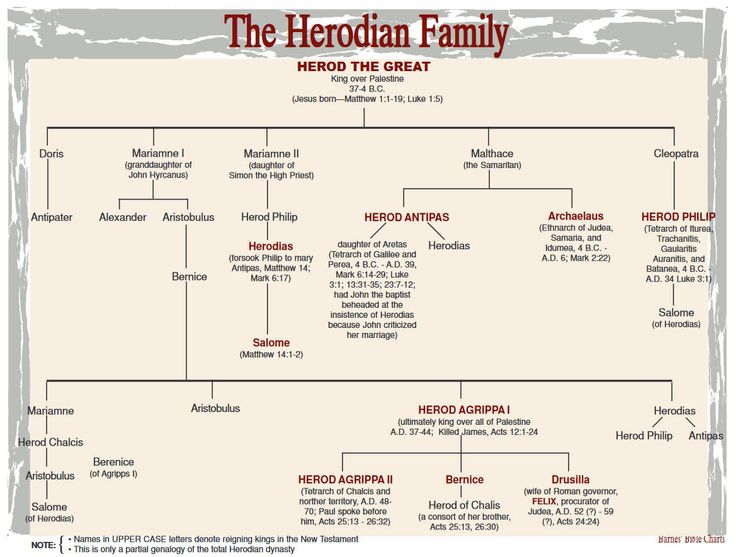 At the instigation of her mother, Salome demanded the head of John the Baptist. This request was granted. So Salome - perhaps for the first time in history - used striptease as a weapon of revenge. The strip dance began to transform from a sacred ritual into a source of personal gain for the performer.
At the instigation of her mother, Salome demanded the head of John the Baptist. This request was granted. So Salome - perhaps for the first time in history - used striptease as a weapon of revenge. The strip dance began to transform from a sacred ritual into a source of personal gain for the performer.
Hans Memling, Altar of St. John the Baptist, 1474-1479
Salome. Bartolomeo Veneto *** Salome (year 5 or year 14 - between and) - Jewish princess, daughter of Herodias and Herod Boet, stepdaughter of Herod Antipas; later queen of Chalkis and Lesser Armenia. One of the characters of the New Testament (however, there she is mentioned only as the daughter of Herodias Matt. ).
Coins with her image have been preserved, dated - BC. On the front side of the coins, her husband Aristobulus of Chalcis is depicted with the signature ΒΑΣΙΛΕΩΣ ΑΡΙΣΤΟΒΟΥΛΟΥ (“King Aristobulus”), on the back - Salome with the signature ΒΑΣΙΛΙΣ ΣΑΛΟΜΗΣ (“Queen SalomeΣ”).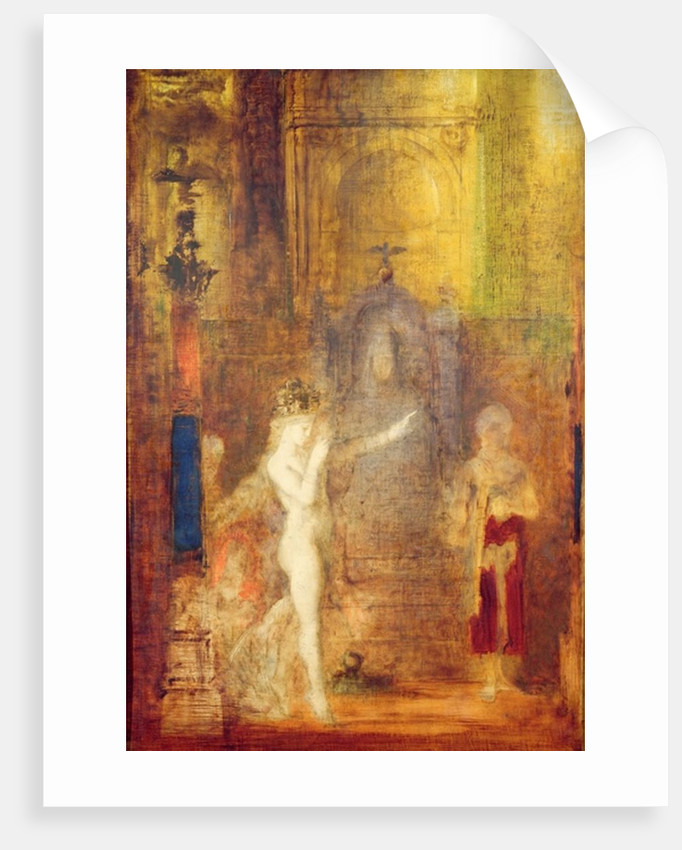
Initially, Salome married her uncle, Tetrarch Herod Philip II. After his death, she married her maternal cousin, Aristobulus, son of Herod of Chalcis; from him she gave birth to three sons: Herod, Agrippa and Aristobulus.
The daughter of King Herod Salome was involved in the murder of John the Baptist. A person who claims this is most likely associated with cultural figures, rather than clergymen. A common plot, repeatedly replicated in art, when a beauty demands the head of John the Baptist for her dance, turned her into a femme fatale.
The story about the participation of Salome or Salome in the death of John the Baptist is a common story in Western European art for several centuries. Titian and Picasso, Heine and Wilde, painters and sculptors, poets and playwrights immortalized the image of this femme fatale . In the Orthodox icon-painting tradition, the plot is known as "The Beheading of St. John the Baptist."
Let us recall this famous story.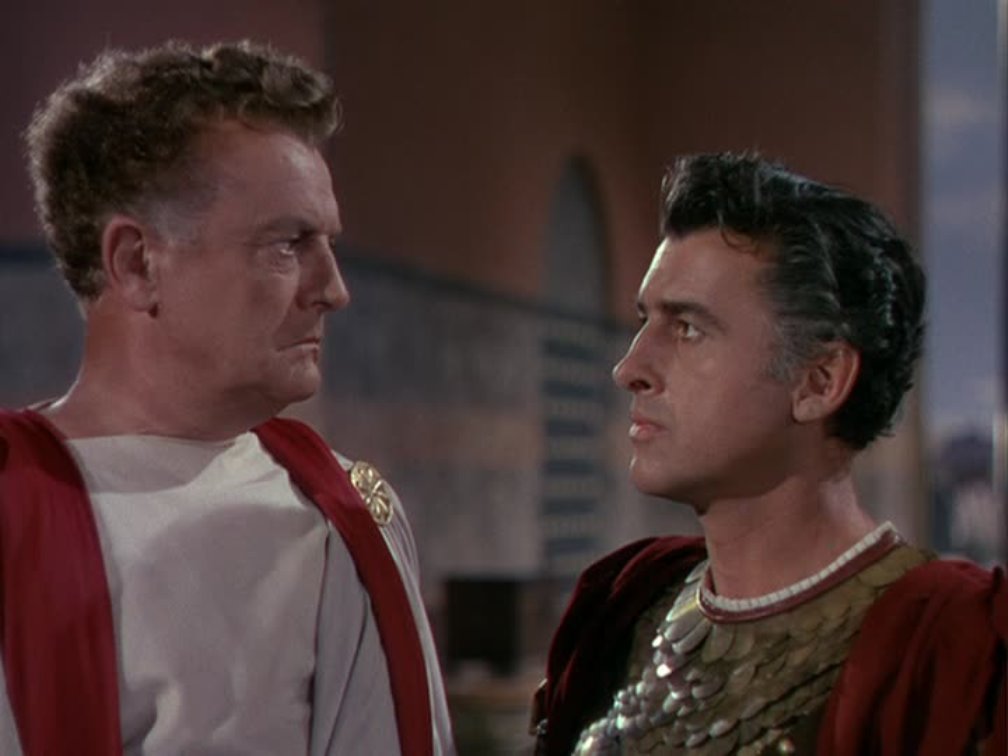 Salome danced before Herod during his birthday celebration. Herod liked the dance of the young girl so much that he promised her everything she wanted, up to half of his kingdom! At the instigation of her mother Herodias, Salome asked Herod for the head of John the Baptist. Herod ordered John the Baptist to be beheaded and his head to be brought on a platter.
Salome danced before Herod during his birthday celebration. Herod liked the dance of the young girl so much that he promised her everything she wanted, up to half of his kingdom! At the instigation of her mother Herodias, Salome asked Herod for the head of John the Baptist. Herod ordered John the Baptist to be beheaded and his head to be brought on a platter.
There is no mention of her name in the pages of Holy Scripture in connection with the death of John. Neither in the Gospel of Mark nor in the Gospel of Matthew is the girl's name mentioned. "And when they celebrated the birthday of Herod, his daughter danced in front of the guests ...". But her name is not mentioned. Only the historian Josephus Flavius, on the pages of his "Jewish Antiquities" found this name.
French historian and writer, esoteric and occultist Robert Ambelain in his book "Jesus, or the deadly secret of the Templars" offers his version of why Salome could not be at that sinister feast. Herod the Great died in 5 BC. e. After his death, the eldest son, Archelaus, sailed to Rome to be confirmed by Emperor Augustus on the throne of Judea. His brother, Herod Antipas, returning from Rome, persuaded Herodias, the wife of his brother Herod Philip, to cohabit with him. In Antiquities of the Jews, Flavius Josephus reported that Herodias agreed to this shortly after the birth of her daughter Salome.
e. After his death, the eldest son, Archelaus, sailed to Rome to be confirmed by Emperor Augustus on the throne of Judea. His brother, Herod Antipas, returning from Rome, persuaded Herodias, the wife of his brother Herod Philip, to cohabit with him. In Antiquities of the Jews, Flavius Josephus reported that Herodias agreed to this shortly after the birth of her daughter Salome.
“Consequently,” writes Ambelain, “the said Salome had already been born in the year 5 BC, and by that time she was about a year old. was (5 + 32) at least thirty-seven years old."
According to the same Josephus Flavius, the first time Salome married her cousin Philip, the son of Herod Antippa, who was both her own uncle and, due to marriage with Herodias) stepfather. After the death of Philip Antippa, leaving no offspring from her marriage to Salome, she remarried Aristobulus, brother of Agrippa. In this marriage, she gave birth to three sons: Herod, Agrippa and Aristobulus. Preserved coins with her image, dating from 56-57 years.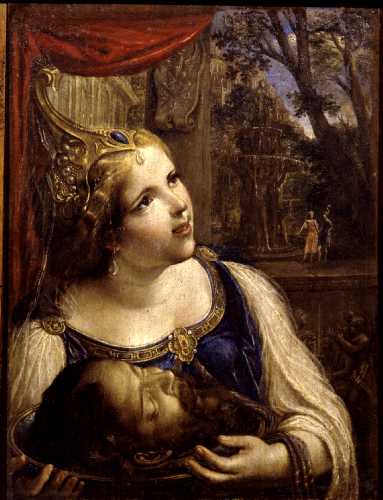 On the obverse is the image of Aristobulus, on the reverse - Salome.
On the obverse is the image of Aristobulus, on the reverse - Salome.
In his palace in Tiberias, Herod Antipas arranges a big feast. Suppose Salome is seated at a table where the highest dignitaries of Judea have gathered, along with her second husband, Aristobulus. Historian R. Ambelain asks: "How plausible is it that the Idumean tetrarch asked Salome, the mother of the family, to dance in front of her husband?"
And he answers himself: “In the East in those days they didn’t dance, as they do in our time in European dances, “in their own circle” and “for their own pleasure.” There were dancers for whom it was a craft, and a very despicable craft. for his stepdaughter, who at the same time was his niece, to start making seductive entrecha in front of her husband and in front of the whole court was an unthinkable thing: it would mean inflicting a grave insult on both. East and given the era, most likely blurred prematurely".
It is doubtful that the tetrarch offered Salome a reward in the amount, as the Evangelist Mark writes, up to half of his kingdom? It won't get any better if you try to replace Salome with Herodias, who was fifty years old at the time.
It seems that the talented writers Mark and Matthew decided to present the execution of John the Baptist not as an ordinary political prisoner, but as a victim of a love affair. And in this capacity, the plot fell on the fertile ground of art and was remembered by many generations. The opposition of dance and death turned out to be the personification of both ancient myths and historical anecdotes. Passion and crime figured in the Bible itself: Samson and Delilah, but especially Judith with the head of Holofernes. In real history, it is enough to recall the names of the Scottish Queen Mary Stuart or the spy Mato Hari.
Following the logic of Robert Ambelain, Herod Antipas imprisoned John the Baptist in Maheront, in the desert of Moab, in order to deprive him of any influence on the Jewish people. A year later, he ordered his beheading in the same fortress of Macheron, when the uprising of the Zealots began to acquire dangerous proportions. The personality of a member of the French Academy and the World Association of Francophone Writers, Martinist Ambelain and his book can be treated as fiction, and not as a scientific work, but it is difficult to disagree with the conclusion he made about Salome and her participation in the death of the Baptist.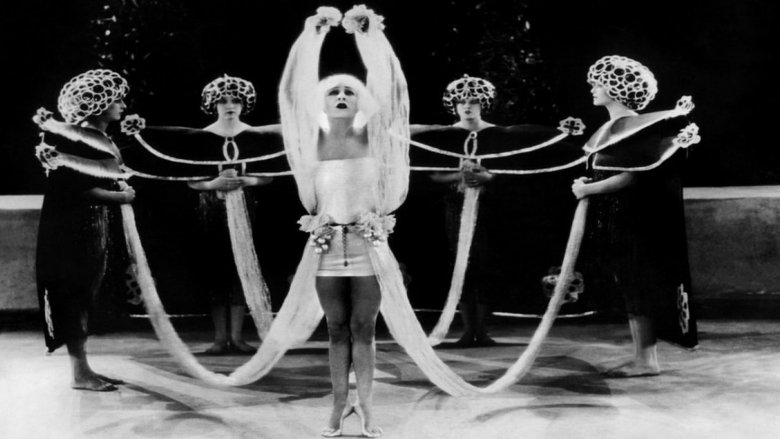
"It was only a simple and cruel precaution, but neither Herodias nor Salome had anything to do with it. This explains why the Church Fathers knew nothing about the notorious "Dance of Salome", an episode that should be attributed to the realm of legends", Ambelain concludes.
The biblical story of Salome beheading John the Baptist occupies one of the central places in genre painting, as well as in art in general. Over time, Salome became associated with the image of a fatal, and at the same time attractive woman.
Oscar Wilde wrote the play Salome ", Richard Strauss created based on her, and Florent Schmitt wrote the ballet" Salome's Tragedy ", staged at the time by the legendary.
But more often than not, the biblical Salome appeared in the paintings of artists from different eras.
It should be noted that in the New Testament about Salome says a little. She was a Jewish princess, the queen of Chalkis and Lesser Armenia, the daughter of Herodias and Herod Boeth, and later the stepdaughter of Herod Antipas. The latter was her paternal uncle, and her mother had a relationship with him. This relationship between Herodias and Herod Antipas was publicly condemned by John the Baptist, for which he was imprisoned.
The latter was her paternal uncle, and her mother had a relationship with him. This relationship between Herodias and Herod Antipas was publicly condemned by John the Baptist, for which he was imprisoned.
At this time Salome danced at the birthday party of Herod Antipas, and her uncle liked her dance so much that he promised his niece to fulfill her every desire. Possibly influenced by mother, but Salome asked Herod Antipas to bring her the head of John the Baptist. By order of Herod John the Baptist beheaded and brought his head Salome on a platter.
This story is more like a legend, because John the Baptist could have been killed for political reasons. Also a story with dance and desire Salome could have been created as a distraction, because there is an opinion that Herod Antipas did not want to kill John, "knowing that he is a righteous and holy man." Be that as it may, but the image of the fatal image of Salome captivated the minds of artists forever.
One of the first to mention Salome in painting by the Italian artist Giotto, in the painting "The Feast at King Herod" in 1320. He was followed by other artists of the Renaissance (Caravaggio, Peter Paul Rubens, Rembrandt) and later (Gustave Moreau, V. Surikov and others).
Giotto. "Feast at King Herod". 1320
Practically in all paintings Salome is a beautiful, graceful, young woman. And her innocent beauty contrasts very much with the head of John the Baptist present on many canvases.
Benozzo Gozzoli. "Dance of Salome". 1461-1462
Sebastiano del Primobo. "Daughter of Herodias". 1510
Titian. Salome with the head of John the Baptist. 1515
Lucas Cranach the Elder. "Feast of Herod". 1530
Titian. Salome with the head of John the Baptist. OK. 1530
Caravaggio. Salome with the head of John the Baptist. 1605
Herodias (c.15 BC - after 39 AD) - the granddaughter of Herod the Great from his son Aristobulus.
The execution of John the Baptist is associated with her name.
According to the historian Josephus Flavius, she was married to her uncle Herod Philip I and had a daughter Salome by him, and then entered into cohabitation with her other uncle, Herod Antipas.
In the texts of the New Testament, Herodias is mentioned as the wife of the Tetrarch of Judea Herod Antipas, whom he took away from his brother Philip. Even at that time, from the point of view of the Jewish religion, and indeed moral norms in general, marriages between relatives were highly discouraged, and incest was considered a great sin. John the Baptist publicly condemned and mercilessly denounced the blasphemous connection, for which Herodias fiercely hated the prophet.
Herodias was a cruel, treacherous, greedy, depraved and excessively proud woman. In examining her life, even biblically biased historians cannot find anything positive about her. Even among the very depraved high society of that time, her figure stands out noticeably in a negative sense.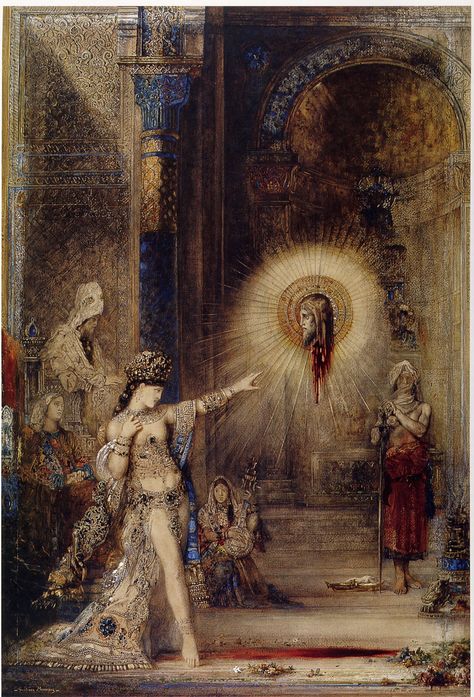 From a young age, she dreamed of the royal crown at any cost. Evil Herodias harbored a grudge against the prophet John because he, without fear, spoke of her depravity. Wanting to destroy him, she influenced Herod to imprison the Forerunner. And then Herodias had a chance to destroy John the Baptist.
From a young age, she dreamed of the royal crown at any cost. Evil Herodias harbored a grudge against the prophet John because he, without fear, spoke of her depravity. Wanting to destroy him, she influenced Herod to imprison the Forerunner. And then Herodias had a chance to destroy John the Baptist.
Yvette Pozdnikova. Herodias and Salome. 2008
One night in A.D. 28 The palace of Herod Antipas was on fire. The court celebrated the birthday of the ruler, the feast continued after midnight, when the drunken tetrarch wished that Salome, his stepdaughter, the daughter of Herodias, who was skilled in this, danced in front of his guests. Raised by her depraved mother, the young Salome did not hesitate to perform an indecent voluptuous dance in the nude. The stepfather, seeing the delight of the guests, promised her any reward she wanted, up to half of her kingdom!
Dance of Salome
« She, at the instigation of her mother, said: give me here on a platter the head of John the Baptist. And the king was sad; but, for the sake of the oath and those reclining with him, he ordered to give it to her, And he sent to cut off John's head in prison. And they brought his head on a platter and gave it to the maiden, and she took it to her mother " (Mt. 14:8-11). Solomey was then no more than 15-16 years old.
And the king was sad; but, for the sake of the oath and those reclining with him, he ordered to give it to her, And he sent to cut off John's head in prison. And they brought his head on a platter and gave it to the maiden, and she took it to her mother " (Mt. 14:8-11). Solomey was then no more than 15-16 years old.
Decapitation of John the Baptist (Caravaggio. 1608)
Persuading her daughter Solomeia to ask for the head of John the Baptist, Herodias pronounced an eternal sentence on herself and her daughter. What befell Herod, Herodias and Salome after such an atrocity?
With her intrigues, Herodias brought disaster to Herod Antipas and was exiled with him into exile in Gaul. The incredibly cruel and vicious Herodias ended her life in poverty and obscurity. The proud granddaughter of Herod the Great suffered exactly what she feared most of all. But she chose this fate for herself when, through Salome, she gave the order to kill John the Baptist, which sentenced herself to death.
And Salome later “married the Tetrarch Philip of Trachon, son of Herod the Great,” that is, she became the wife of her great-uncle and her mother’s ex-husband. Philip ruled his area for 38 years, from 4 BC. before 34 AD and became famous, in particular, for the fact that on the southern slopes of Mount Hebron he built a pagan temple in honor of the emperor Augustus, which was an outrageous act in the eyes of monotheist Jews. After the death of Philip, Salome married Aristobulus, son of Herod and brother of Agrippa. They had three children - Herod, Agrippa and Aristobulus. Aristobulus led a very skillful policy towards Rome, seeking the favor and trust of the emperor Nero, who in 55 AD. gives him the possession of Lesser Armenia, conferring on him the royal title.
Robert Henry, Salome, 1909
Salome was given a lot of time to repent of what she had done, but instead she rose higher and higher in her pride. She had the royal title that her mother so dreamed of. Moreover, she had a triple title: the queen of Chalkis, Lesser and Greater Armenia.
Moreover, she had a triple title: the queen of Chalkis, Lesser and Greater Armenia.
History has preserved the story of her terrible death. Once, by negligence, Salome fell into the hole, and the ice closed around her neck. No one heard the cries of Solomei, since it was at that time that none of the people were nearby. Trying to escape from the trap, she wriggled under the water, as if performing a terrible dance, just as in her distant youth she danced in her stepfather's palace. Despite desperate resistance, Solomeya could not get out of this position and continued to hang on her neck, while her torso swayed measuredly under the ice until the ice cut her neck in a supernatural way. After that, her body fell to the bottom of the river, and the head of the dead Solomei was brought and given to Herod and Herodias.
The great Biblical principle of sowing and reaping was fulfilled especially clearly in the life of Salome. Having sentenced John the Baptist to death with ease, not even for a moment embarrassed or thinking, Salome signed her own sentence, and not only to a terrible death in earthly life, but also to eternal death.
Prepared by Sergey SHULYAK
JOHN THE BAPTIST AND SALOME.
Coming out of the desert, when at last the forty days and nights of fasting, prayer and temptation had passed, Jesus, to his great chagrin, learned that his Teacher and Forerunner John was imprisoned.
The immediate cause of the whole disaster that happened to John was his extraordinary popularity. Jesus, who retired into the wilderness immediately after his baptism, was then unknown to anyone; everyone knew only John, and the crowds of pilgrims going to the place near the Jordan, where he usually appeared, became more and more crowded. The wisdom of John, as well as rumors about his prophetic gift, soon reached Herod Antipas, the son of that Herod who became famous for unusual cruelties, including the beating of babies. Little is known about the personality of Herod Antipas, but it is quite possible that he had moments of repentance and feelings of guilt that he wanted to quench in conversations with the wise John. He, in particular, could not but feel for himself a completely definite sin, since he took away his wife Herodias from his own brother. Such an act was recognized by many as the sin of incest.
He, in particular, could not but feel for himself a completely definite sin, since he took away his wife Herodias from his own brother. Such an act was recognized by many as the sin of incest.
Direct and incorruptible John, having appeared in the palace of Herod Antipas, began with a formidable denunciation of him in an illegal and ungodly marriage with Herodias. It is assumed that it was from John the Baptist that Herod first heard about Christ. While already in prison, he continued to speak of Christ as the successor of his work.
Meanwhile, Herodias, irritated by the denunciations of John, constantly demanded from her new husband the execution of the incorruptible prophet, whose denunciations were well known and, of course, harmed her in the eyes of the court and. subjects. Herod hesitated - something constantly kept him from taking a decisive step. Let us not forget that the prophets from ancient times enjoyed the unwritten rights of free speech as people marked by the grace of heaven.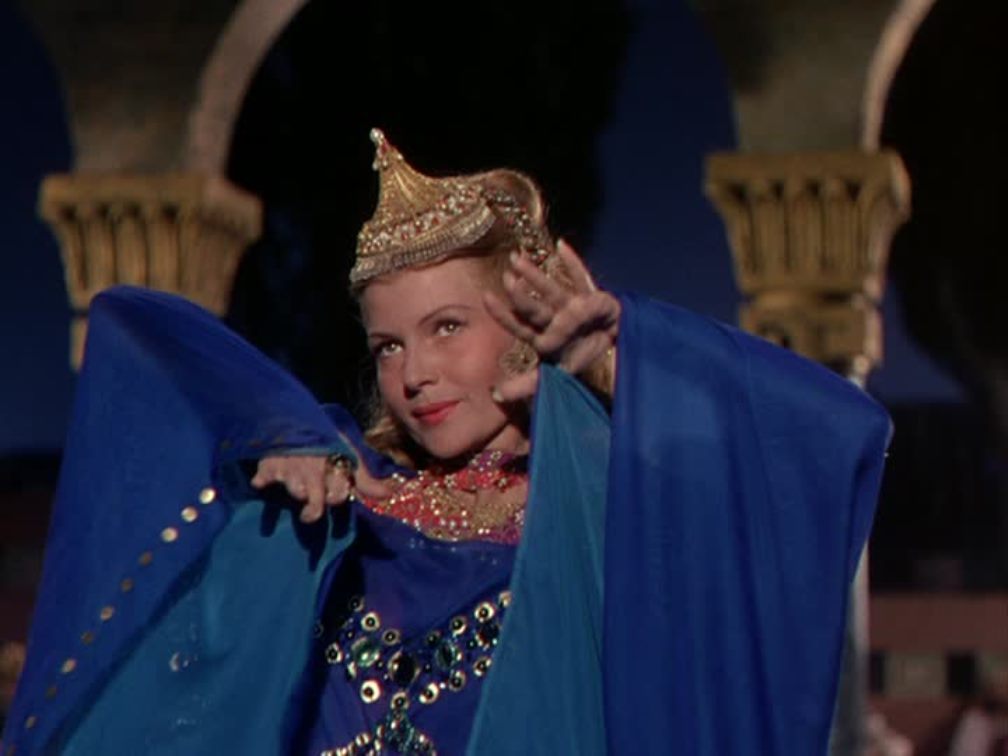
But an opportunity for vengeful Herodias still turned up. One day there was a big feast. Herodias, asking for permission, brought to him, to show the guests, her daughter from her former husband Antipater Salome, famous not only for her beauty, but also for the extraordinary art of dancing.
Fascinated by the dance of Salome, inflamed by the wine and the cries of delight of all those gathered, Herod, unexpectedly for everyone, swore an oath to Salome to grant her whatever she asked, even if only half of the kingdom. Salome, taught by her mother, demanded that she be immediately delivered from the fortress of Macheron, where John was kept, his head on a golden platter. Herod was sincerely saddened, he did not expect such a bloody tribute from such a lovely creature as the young beauty Salome was. But there was nothing to do - after all, he swore in front of everyone promised to reward the extraordinary dancer with any gift.
And Salome, having accepted a golden dish with John's bloody head from the hands of a servant, solemnly offered it to her mother Herodias, and she pierced the tongue that had fallen out of John's mouth with a golden pin.
It remains to add that both Herod Antipas and his wife Herodias ended their lives in need and obscurity as a result of a palace coup arranged by Herodias' brother Agrippa, they were expelled into exile without the slightest means of subsistence.
From book Night in the Garden of Gethsemane author Pavlovsky Alexey
JOHN THE BAPTIST. John the Baptist When Jesus was about twenty-eight years old, and it was twenty-ninth, a new prophet appeared in Judea - John. Rumors about him reached Nazareth. The prophet lived beyond the Jordan - in the area immediately adjacent to the desert and therefore
From book From the depths of sin to the father's house: Sermons, interviews, reports author Malin Igor
JOHN THE BAPTIST According to the testimony of the Lord, “of those born of women there is not one prophet greater than John the Baptist” (Luke 7:28). What is the greatness of this man? How can his life path help in our spiritual development? Let's look again at the image of John
From book Myth or reality. Historical and Scientific Arguments for the Bible author Yunak Dmitry Onisimovich
Historical and Scientific Arguments for the Bible author Yunak Dmitry Onisimovich
John the Baptist Some critics of the Bible and the Gospel claim that John the Baptist is also not a historical person, but a mythical one. The anti-religious Rumyantsev tries to prove this in his book “The Myth of John the Baptist”, exposing John as “a mythical person,
From book Lost Gospels. New information about Andronicus-Christ [with large illustrations] author Nosovsky Gleb Vladimirovich
From book Son of Man author Smorodinov Ruslan
29. John the Baptist John (???????), or, more precisely, Johann (????????), is called the Dipper (? ?????????) by the evangelists. The main rite that gave John this name, and his school - its character, was the rite of complete immersion in water - t'bil? (????????). Therefore, the Greek word baptistes
From book Sophia-Logos.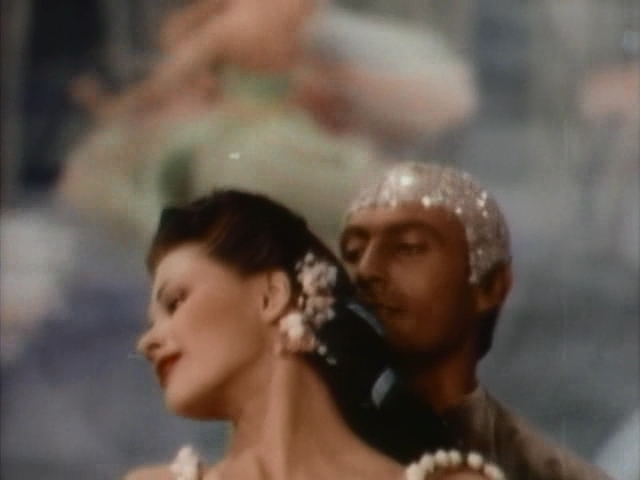 Dictionary author Averintsev Sergey Sergeevich
Dictionary author Averintsev Sergey Sergeevich
From book Knowing Jesus Through the Old Testament author Wright Christopher
John the Baptist In this electrified atmosphere of eschatological expectation there appeared a man sent from God, whose name was John. It is the hope of the restoration of Israel that is used by New Testament scholars as a context for understanding ministry and
From book Gospel stories for children author Kucherskaya Maya
John the Baptist There was a man in Judea. His name was John the Baptist. He walked in clothes made of camel hair and ate the honey of wild bees. He lived in the desert and prayed to God all day long. He was not afraid of anyone in the world, neither wild animals, nor robbers. And he told everyone the truth. and
From book Water and blood and Spirit author Bezobrazov Cassian
6–8, 15.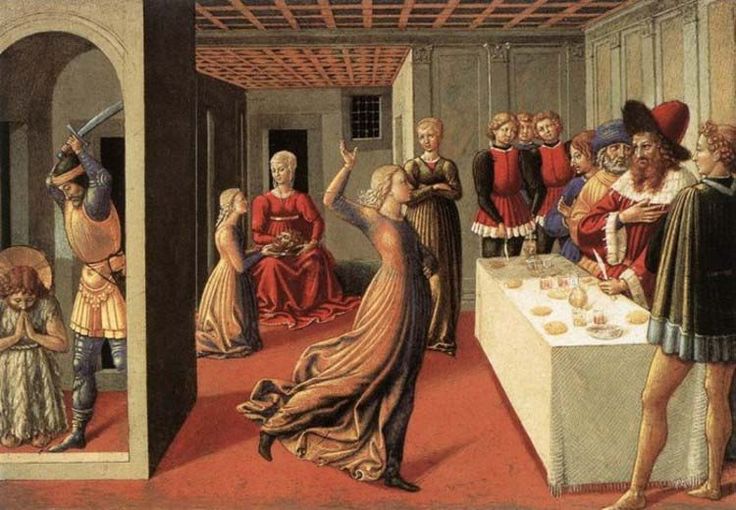 John the Baptist This could be the end of our general review of the Prologue of Johann. But there is one more thought in it, which cannot be said to be emphasized, but it returns twice and sets a theme that, more negatively than positively,
John the Baptist This could be the end of our general review of the Prologue of Johann. But there is one more thought in it, which cannot be said to be emphasized, but it returns twice and sets a theme that, more negatively than positively,
From book Conversations on the Gospel of Mark, read on the radio "Grad Petrov" author Ivliev Iannuary
1. John the Baptist. 1.1-8 - “The beginning of the gospel of Jesus Christ, the Son of God, as it is written by the prophets: “Behold, I am sending my angel before your face, who will prepare your way before you.” "The voice of one crying in the wilderness: prepare the way of the Lord; make straight his paths." Appeared
From book Bible Guide author Asimov Isaac
John the Baptist Matthew now proceeds at once from the account of the birth and childhood of Jesus to his adult life and to what in this and other synoptic gospels appears to be the last year of his life. During this last year in the Gospel of
During this last year in the Gospel of
From book Bible for children author Shalaeva Galina Petrovna
John the Baptist Mark begins his gospel with John the Baptist. He says nothing about the virgin birth in Bethlehem, about any miracles associated with the infancy of Jesus. He does not even mention the origin of Jesus from the lineage of David. In this gospel Jesus is mentioned as
From book Orthodox Encyclopedia author Lukovkina Aurika
John the Baptist When Elizabeth had a child, it was expected that he should have been named Zechariah, like his father. That Luke seriously stated this: Luke 1:59. On the eighth day [relatives] came to circumcise the baby and wanted to name him, after his father's name, Zechariah,
From book author
John the Baptist The Hymn to the Logos is interrupted by the emphatic assertion that the Logos should not be interpreted as John the Baptist.







